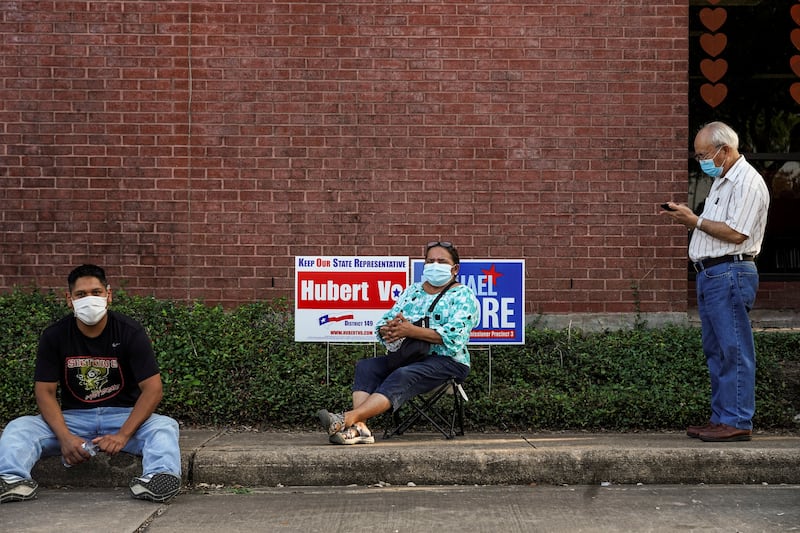The US Department of Justice sued Texas over new redistricting maps on Monday, saying the plans discriminate against voters in the state’s booming Latino and black populations.
The lawsuit, filed in the Western District of Texas, claims the state is violating part of the Voting Rights Act of 1965, which outlawed discriminatory voting practices, particularly across southern states.
It is the first filing challenging a state’s maps from the Joe Biden Justice Department during this redistricting cycle. Legal experts anticipate a blizzard of litigation as states redraw their legislative lines.
The lawsuit notes that the vast majority of Texas’s population growth over the past decade came from black, Latino and Asian people, but the new maps that state Republicans drew doesn’t give any of these communities new opportunities to choose their own representatives.
Instead, the maps pack black and Latino communities into bizarre-shaped districts — a Dallas-area one is referred to as a “seahorse” shape — while preserving safe seats for white Republicans.
“This is not the first time that Texas has acted to minimise the voting rights of its minority citizens,” Associate Attorney General Vanita Gupta said.
“Decade after decade, courts have found that Texas has enacted redistricting plans that deliberately dilute the voting strength of Latino and black voters and that violate the Voting Rights Act.”
The lawsuit cites several congressional districts where Republicans drew tortured lines to lower the share of black and Latino voters in their party’s congressional districts.
In west Texas’s competitive 23rd district, the map trimmed out areas near El Paso and San Antonio to lower the share of Latino voting-age residents by 9 per cent.
In the Dallas area it pulled black and Latino residents of the northwest suburbs out of the district of Rep. Beth Van Duyne, who narrowly won her re-election bid against a Democratic Black Latina candidate last year.
In the Houston area, where the share of the white population is dwindling, the map kept six of 10 House districts as white-majority or plurality districts.
Texas has had to defend their maps in court after every redistricting process since the Voting Rights Act took effect in 1965, but this will be the first since a US Supreme Court ruling said Texas and other states with a history of racial discrimination no longer need to have the Justice Department scrutinise the maps before they are approved.
The Supreme Court ruled in 2019 that it won’t referee partisan gerrymandering disputes — maps drawn to benefit a political party.
AP contributed to this report.
Gerrymandering, voter suppression and what it means for the election








